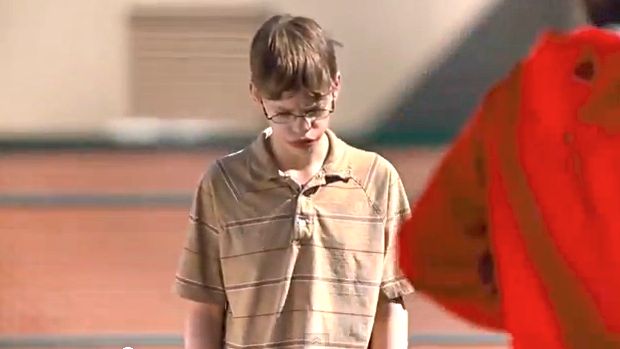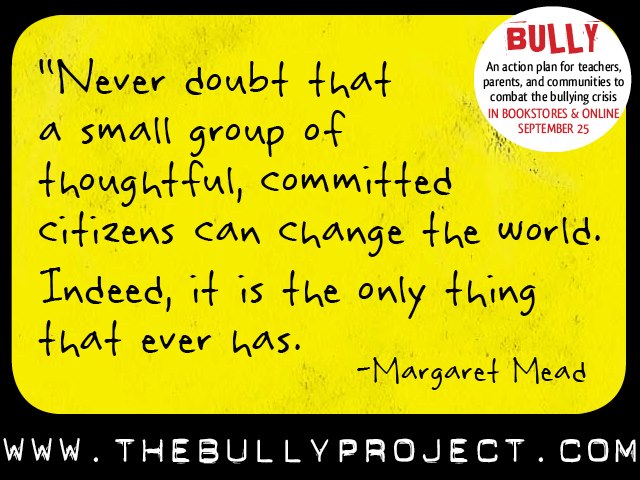SUMMARY
This is AI generated summarization, which may have errors. For context, always refer to the full article.

MANILA, Philippines – Bully begins with an extremely difficult thing to look at: We look into the face of a father whose son has only recently committed suicide due to bullying.
We’re provided his voice-over as we are shown home videos from the boy’s youth. Then we are asked to watch as the father attempts to maintain composure as he explains his son’s daily life and how his son had a demeanor that attracted bullies.
We are witness to a video where, as a child of 5 or 6, the boy is bullied in a kiddie playground.
It’s a terribly provocative and gut-wrenching opening. It, and the film, forces us to face a pressing issue.
I have to admit to two things myself, before we proceed (and these two things tie into each other):
First, I was bullied a lot as a kid, and I have the affinity for video games and comic books and other nerdery as war wounds. Second, I generally shrug off bullying as something that kids will always do, and you’ll have to find a way to cope. Kids are cruel, and they are cruel to each other. You just get through it.
So when I came into the flick, I knew to a certain extent that things were bad.
But I did not know how bad they could get.
Of course, this is what the film aims to do, and it does it well. It shows us that there is a problem, and we should do something about it. Well, the American school system should anyway. They must address this issue.
Here’s the problem with Bully though: it’s a one note film.
It sets out to tell us that bullying is a problem in America. And it does so, sort of. But then we only get a few examples, a few schools in middle America. These are places that generally seem similar to each other.
We don’t get a sense of bullying and its effects across social classes or in different contexts.

What Bully does well is that it trains itself on specific bullying victims. It reveals the depths of victimization, the cruelty of bullies, the indifference of the institutions that should be protecting these kids, the inability of parents to intervene. But once we see this, I really feel we need to move on and create new discourse.
Again, we begin with the father telling us about how his son was bullied. Then we get different cases of other kids being bullied.
I’m not asking that we shy away from the harsh realities. But what this film does is wallow in those realities. It does not bring a critical eye to the issue; rather, it trains its eyes on the victims and merely asks for sympathy, for emotion to power a positive response.
I don’t think things can work that way. You’ve got to understand the situation, you’ve got to approach it from different angles. What about the bullies? Why don’t we track them down and see what motivates them?
How about the administrators? It shows them, sort of. It shows their ineptitude.
But there has got to be more than this.
Otherwise, it is just a pity party, and that is just an injustice to the topic. What’s more, if you are exposed to something long enough, you become desensitized to it. Or you get bored with it.
That’s the worst thing that you can do with such an important topic.
Ultimately, Bully feels like the kind of film that you show to kids so that you can get them to either do something or stop doing something. It has a message and it beats us over the head with it. That would be fine if you were showing this to a class of kids.
But as documentary filmmaking, it’s pretty disappointing as it fails to generate discourse. It engages and it makes us care for its subjects. But it lacks escalation, narrative and ultimately even its call to action is weak because it is not based on a larger and more critical approach to addressing the problem.
Yes, bullying is a terrible problem and it must be addressed.
But Bully might not be the smartest flick to do it. – Rappler.com
Have you seen Bully? What are your thoughts about it? If you agree or disagree with our reviewer’s opinion, please let us know why. Email us at desk@rappler.com with subject heading THOUGHTS ON BULLY.
Schools interested to screen Bully may get in touch with the JBEC secretariat at jbec@xs.edu.ph.
About the writer:
Carljoe Javier teaches at the UP Department of English and Comparative Literature. He has written a few books, most recently the new edition of The Kobayashi Maru of Love available from Visprint Inc. and the upcoming Writing 30 available as an ebook at amazon, ibookstore, b&n and flipreads.com.
He spoke at the recently-concluded Read Lit District organized by the National Book Development Board on the topic “May-December Affair: Using Contemporary Stories and Poetry in Teaching History.”
Add a comment
How does this make you feel?
There are no comments yet. Add your comment to start the conversation.